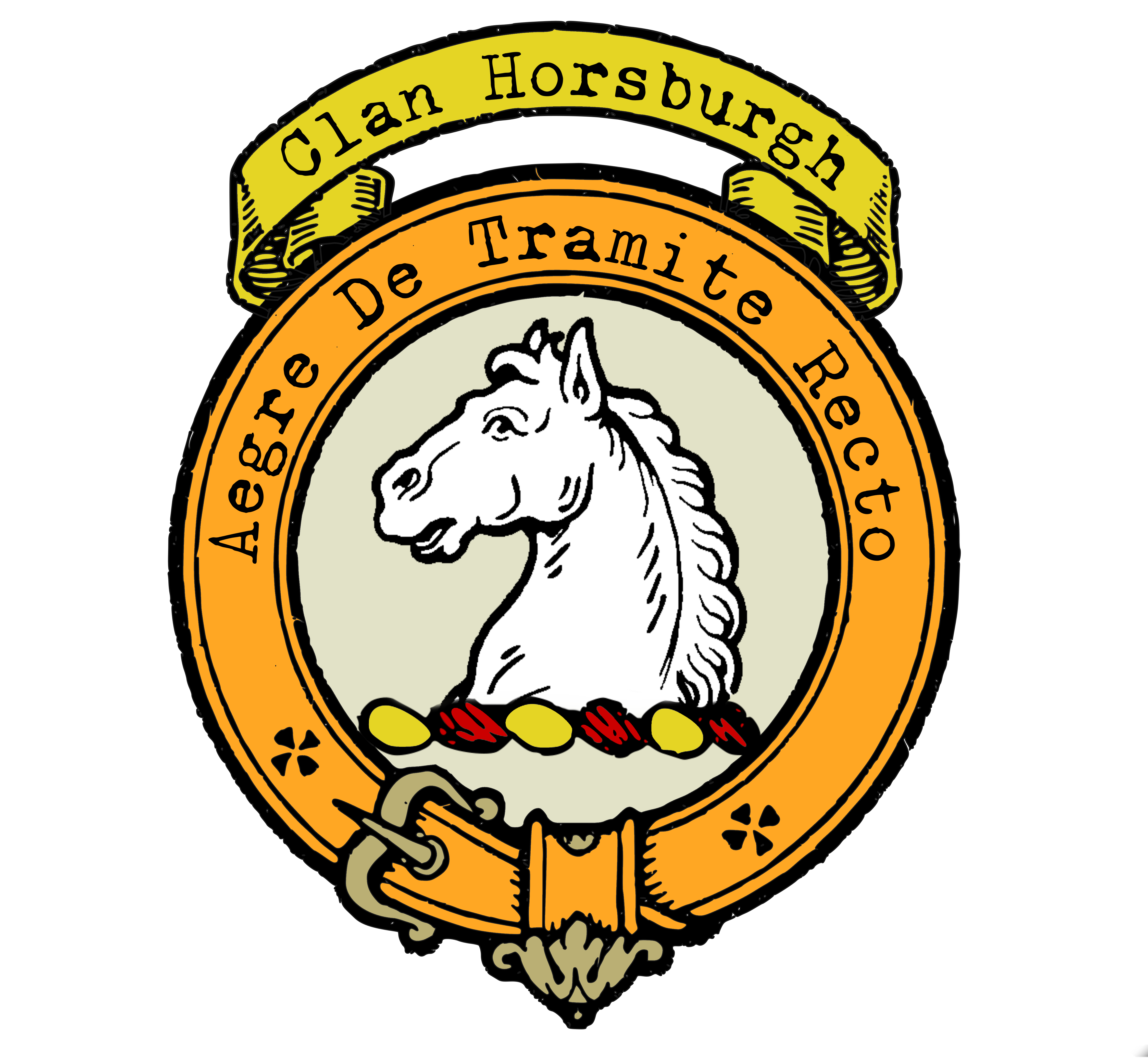Horsburgh Clan Crest
|
|
CREST: A horse’s head couped Argent MOTTO: Aegre de tramite recto TRANSLATION: Having safely passed through a rough path VARIATIONS: N/A |
| Scotland is known for its rich history and vibrant clan culture, with each clan carrying its own unique traditions and stories. One such clan is Clan Horsburgh, whose origins can be traced back to the lands of Horsburgh near Innerleithen in Peeblesshire.
The earliest known ancestor of the Horsburgh clan was an Anglo-Saxon referred to as “horse” or “orse.” He chose to settle on the north bank of the Tweed River, where he constructed a castle that would become the namesake of his descendants. The ruins of this castle, known as Horsburgh Tower, still stand as a testament to the clan’s ancient roots. The prominence of the Horsburgh clan is evident throughout Scottish history. Simon de Horsbrock, for instance, witnessed a charter to the monks of Melrose Abbey during the reign of Alexander II, showcasing the family’s involvement in important legal and administrative matters of the time. In 1287, a notable figure by the name of William de Horsboroch emerged, recorded as a notary public in the diocese of Glasgow. This suggests that the Horsburgh clan had spread its influence beyond its original lands, establishing connections and presence in other regions of Scotland. The Horsburgh clan’s coat of arms, as recorded by Nisbet, features a silver horse’s head on a blue shield. This heraldic representation is a classic example of “canting” or “punning,” wherein the symbols used in the arms play on the family name. In this case, the horse’s head alludes to the clan’s name, further emphasizing their identity and heritage. One notable member of Clan Horsburgh was James Horsburgh, a fellow of the Royal Society and a renowned hydrographer in the early 19th century. His expertise in maritime matters led to his appointment as hydrographer to the East India Company in 1810. James Horsburgh authored several authoritative works on maritime subjects, which became essential references in the field. Despite the passage of time, the Horsburgh name continues to be found in the Borders region and around Edinburgh. It is a testament to the enduring legacy of the clan and its lasting impact on Scottish society. The barony of Horsburgh remained in the possession of the Horsburgh family until recently when it passed to the Cinnery family through Lady Horsburgh of Horsburgh. This transition marked a new chapter in the history of the lands and their associated noble title. |
|
Citations:
|
|

Purchase @ Redbubble
Purchase @ Amazon.com
Purchase @ Amazon.co.uk

